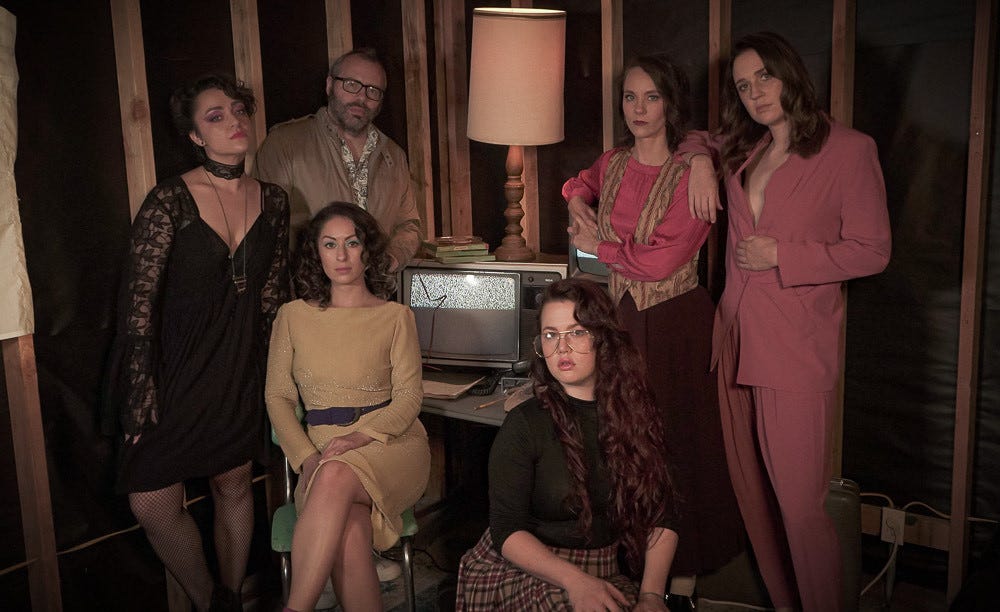
“Would you ladies be interested in helping with… the fondue?” says our host, the young, somewhat nervous Margery (Lauren Hayes).
She blinks at us owlishly from behind oversized glasses.
“Yes! Fondue? I love fondue!” says the woman next to me, enthusiastically.
We are led into the kitchen by Margery and shown a cookbook sitting on the kitchen counter. She opens it and begins making small talk about the recipe we’re about to use. But this is simply a ruse: myself and two other participants lean in close to her, in order to read a series of secret messages hidden inside a hardcover copy of The Good Housekeeping Illustrated Cookbook. We all really know what this really means: fondue isn’t “fondue.” We’ve been asked to help out with cool spy stuff. And once we’ve been appropriately briefed, we find ourselves in the den of the house, tasked with a secret mission to help Sharon (Katie Rediger), the leader of this house party-turned-spy game.
It’s five years after the events of Safehouse ’77. You’ve been invited back to Sharon’s house, but this time, things are going to get serious. Very, very serious. The plot of Safehouse ’82 revolves around a real-life covert CIA operation, an operation that Sharon has close ties to and a lot of insider knowledge of. And now, Sharon needs our help. Trust her or not, the stakes are high.
But… this is a party, right? We’re all drinking yellow “Jungle Juice,” talking about the ERA, and eating the homemade Chex mix that Margery has put out for the party. Everybody is decked out in their finest early 80’s-era clothing and I spend a few moments taking in the splendor of the time capsule of a house I’ve found myself in, one that’s filled with knick knacks like 35mm slides, cassette tapes, board games, a Polaroid camera, a record player, and multiple owl figurines. I take a peek at a shelf holding 8-tracks and a stack of LPs, running my fingers over the old Madonna and David Bowie albums. It looks like a typical social gathering from the outside, but we’ve also been given instructions from Sharon in the first five minutes of the experience that the house is, well, bugged and we are being watched, so everybody must act normally as they silently root all the bugs out.
From there, the experience takes a turn as Sharon reveals to us our true purpose for gathering tonight: accusations are lodged at the CIA, supporting characters are summoned, and our overall objective presents itself. That’s when Safehouse ’82 really gets going. After agreeing to help Sharon, participants in this thrilling interactive spy experience will quickly find themselves being given new missions by performers or whisked away into other rooms or areas outside the house for one-on-one encounters where information is exchanged in secret.
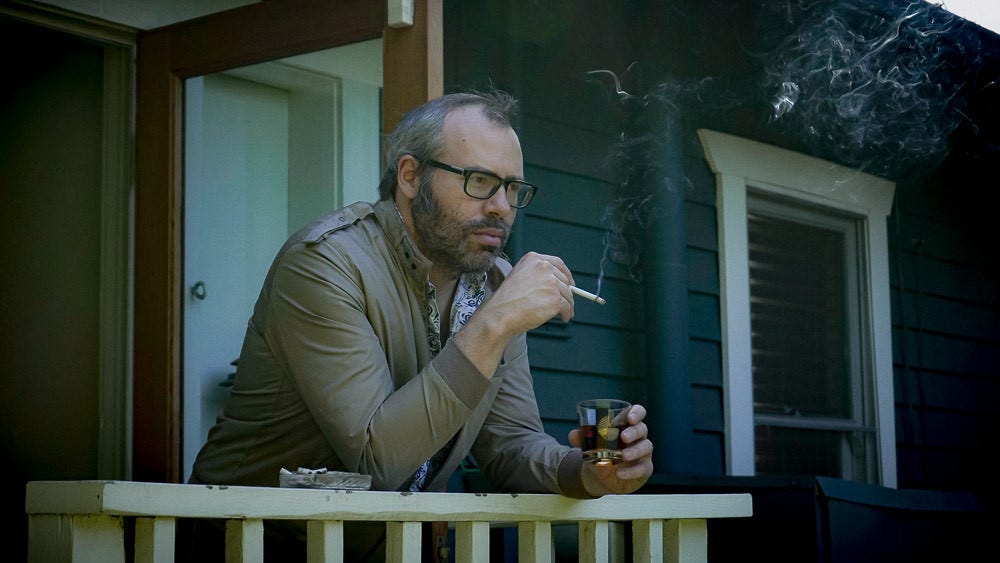
Co-creator Nick Rheinwald-Jones (who also plays Max) tells me afterwards that the big structural difference between Safehouse ’77 and ’82 is that Safehouse ’77 (which I did not have the pleasure of attending) was set up more like a freeform party where individual audience members could get whisked away for a private moment with a performer, and simply return to the party when they were done. Leaving and returning to the party didn’t matter quite as much, but it does now. In Safehouse ’82, I feel as if I am on a structured multi-act, linear journey with Sharon and her motley crew of spies, one that happens to use a party as a facade. We’re going to have to work together as a team to do what we need to do. Sharon has asked us to do the impossible in barely any time at all (which is cleverly communicated through a giant hourglass turned upside down on the fireplace mantle).
Will it even be possible to accomplish our objective in the time left? Sharon’s fate is in our hands.
I won’t say exactly what the plot of ’82 is about. But I did find that the implications of the real-life secret CIA operation which Safehouse ’82 is based upon do create an odd juxtaposition to the casual atmosphere that the show sets up initially. The production does its best to reconcile the incongruity of removing a listening device from a household appliance without blowing our cover in one moment, and then discussing certain African leaders or what it means to be a whistleblower in the next one. But it still takes a little while for the participants as a whole to lean into the seriousness of the scenario, as early on, some people keep making side jokes or laughing nervously.
Others do show up to the house ready to “play” from the moment they step onto the front porch. The laser-sharp focus of a brain in “escape room” mode quickly reveals itself in more than a few of my fellow attendees. This attitude leads to some collisions as the more enthusiastic participants insert themselves awkwardly into dramatic scenes or attempt to take props away from actors, all in the service of achieving the greater goal. And I find that as soon as that time pressure of the ticking clock is added, the parallels between Safehouse ’82 and an escape room become even stronger. But, unlike most escape rooms, there is a fair amount of meaningful backstory that must be discovered through solving these puzzles. And the facts, when finally revealed, feel weighty and important to our characters.
Our actions do indeed have consequences; our successes, we own them. Each player gets a chance to shine here. And I have to say: keeping an audience of 13 people focused and together is a difficult challenge that the performers somehow manage to pull off, for the most part; even the best escape rooms limit the number of participants to far fewer numbers to ensure a good user experience. Logistically, when a group gets too large, it’s just too hard to ensure everybody is on the same page at the same time when it comes to sharing information. This proves to be one of the more difficult aspects of Safehouse ’82 to work around.
The asymmetry of information during the experience works as both an advantage and a disadvantage. Most of the participants will at some point find themselves chosen to do something special that others won’t get to see; there’s a thrill in completing a secret task that only you can accomplish. It does indeed feel like spy work in the moment. But after going on a side quest, participants will often find themselves playing catch up as they leave the main area and come back to completely different circumstances, as compared to ten minutes prior.
Get Kathryn Yu’s stories in your inbox
Join Medium for free to get updates from this writer.
SubscribeSubscribe
And not all of the audience can comfortably fit into the same bedroom during a big reveal; furthermore, some folks seemed distracted by a sidebar with the likes of, say, Connie (Ashley Jones) or Sonya (Co-Creator Katelyn Schiller) during a pivotal plot point. It was unclear if all other side action is meant to stop during this scene so that folks can pay attention. This imbalance meant that as soon as the big scene was over, certain members of the audience were still behind in terms of the story. They hadn’t gotten the chance to examine an artifact or view a piece of evidence, while half of the group had already moved on.
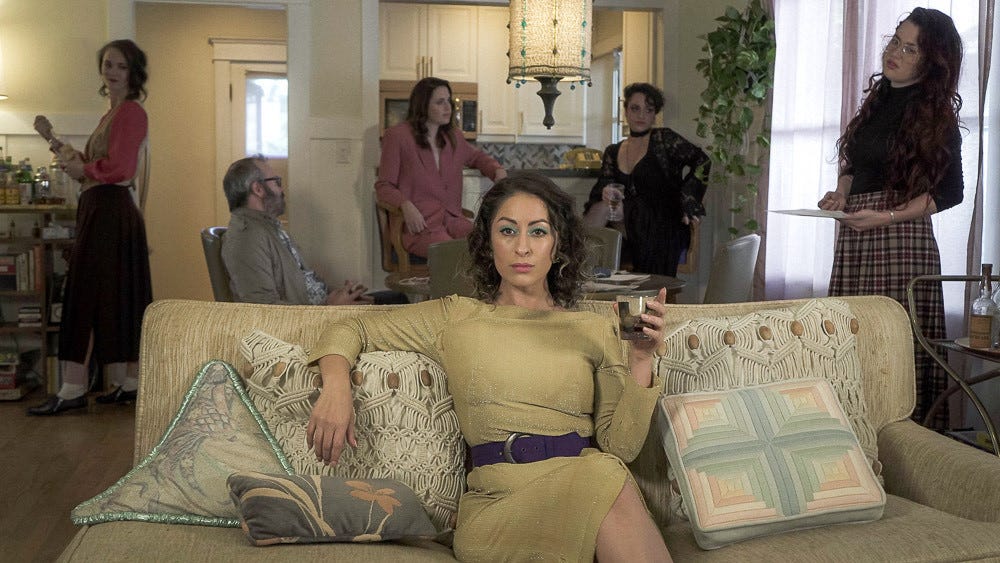
This uneven distribution of knowledge is especially evident when some participants know things that other participants don’t. When playing an escape room, my friends and I usually choose to abide by the same guidelines: talk out loud, describe what you’re finding and seeing to the group, repeat yourself, ask a lot of questions, and make a discard pile of items that you’ve already used. The house is simply too big to shout across and my group in Safehouse ’82 failed to make a discard pile of clues that had already been used, so we had folks frequently asking if something was meaningful during the first half of the show, even though said item had already served its intended purpose. Similarly, some scenes between groups of performers and players were often a bit strained as the actors worked diligently to put people back on the right track. Having someone like the rough-and-tough Carlotta (Shoshanna Green) have to say “oh, we’ve already used that to find this,” but in an unforced, natural manner, is a very tough job. It was one of the many ways the cast tried to keep everybody in sync, but this tactic can only work to varying levels of success, mainly depending upon how well the players were actually listening to the characters (there’s that escape room brain again).
During a tense dramatic moment between Margery and Sharon late in the show, another participant wandered into our private three-person conversation. Myself, Margery, and Sharon were all “in the know” about a certain character’s secret identity. I knew the backstory by having stumbled into a one-on-one with Margery a few minutes earlier. So while I viewed the scene as an evolution of the relationship between Margery and Sharon, the other audience member viewed it more as a chance to interrogate Sharon about certain misdeeds and the identity of a few secret agents, throwing off the scene’s emotional impact. The other participant had inadvertently steamrollered over a crucial moment in the two womens’ relationship, without even knowing she was doing so. She was simply playing the game and playing it as hard as she could.
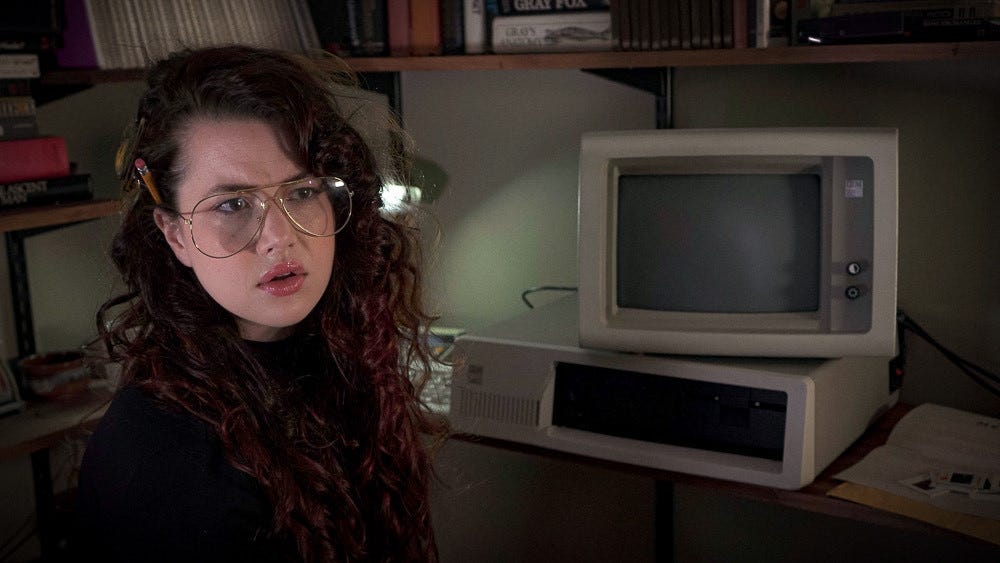
The fast pace of the Safehouse ’82 experience also jams a lot of content into less than two hours of time. As our time dwindles, revelations and realizations begin coming in from all angles as the group steers towards the story’s conclusion. My heart skips a beat each time the phone rings; I race from room to room looking for answers. I find myself wishing for a break, but not necessarily finding a good spot in the action to do so; to be fair, the onboarding had made it very explicit that audience members could take a break whenever they wanted to. But my need for a bit of fresh air was outweighed by my desire to not miss a single story beat as the plot twisted and turned over the course of the show, barreling towards one of multiple possible endings.
I might say that I’m on the edge of my seat, but, in Safehouse ’82, well, you’re rarely sitting down.
However, the need to propel the story forward, quickly, also meant that the one-on-one encounters felt a bit rushed. We at NoPro often talk about the balance during an intimate moment with a single performer; as an individual audience member, I need to be able to suss out what the character needs from me and to be able to provide it to them in turn. When a character is going through a crisis of faith or asking me to be prepared to enact a contingency plan in case it all goes to hell, well, the seriousness of the request needs some space to breathe — a chance for the audience member to really ponder what the character is asking of them. These one-on-one moments simply weren’t given enough room to land emotionally; I kept looking for a good time to interject a line or two into the prepared monologues, and it wasn’t until the end of each one-on-one that I could really communicate my reaction what they were asking of me. While I loved my time with each performer, and what they were asking for made total sense in the story world, I lacked the opportunity to own my half of the interaction. To spend time with these characters while we’re not actively solving puzzles is a treat, even though it’s a brief one.
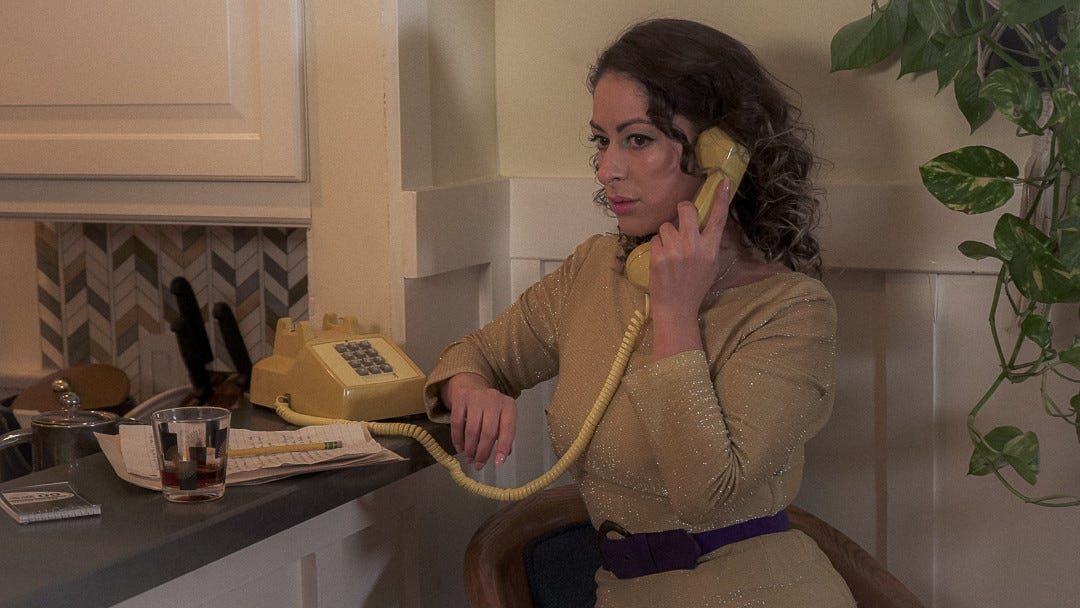
And this is as good a time as any to point out how interesting and nuanced each character is in Safehouse ’82. Most of the people players interact with during the show (and find themselves aligned with) are female. Carlotta, Connie, Sonya, Margery, and Nancy all have their own reasons for doing what they’re doing here. You won’t find any paper-thin Bond girl stereotypes here, only strong, powerful women, driving their own destinies.
At the center of it all is Sharon, a woman who’s made some mistakes in her life, terrible mistakes over the last several years, and finally is owning up to them. The message is clear: you can reclaim your agency and you can make up for everything you’ve done wrong. You just need a little help from your friends. Even if it turns out to be 13 strangers who think they’re going to a house party and end up working on a covert operation.
So, tonight I’ll raise a glass of Jungle Juice in her honor. Because of Sharon, now we know the truth behind the CIA’s misdeeds; even if it’s just kept within our little group, the truth is out there. I’m reminded of the saying inscribed on the walls at Langley:
“And ye shall know the truth and the truth shall make you free.”
Cheers to you, Sharon. I hope you’re finally free.
Wherever you are.
Safehouse ’82 continues through December 8. Tickets are currently sold out.
NoPro is a labor of love made possible by our generous Patreon backers. Join them today!
In addition to the No Proscenium web site, our podcast, and our newsletters, you can find NoPro on Twitter, Facebook, YouTube, Instagram, in the Facebook community Everything Immersive, and on our Slack forum.
Office facilities provided by Thymele Arts, in Los Angeles, CA.



















Discussion